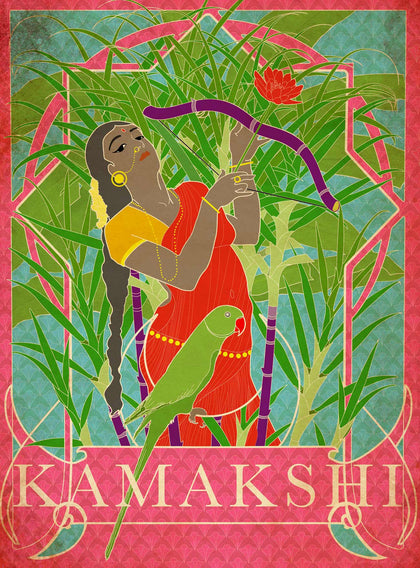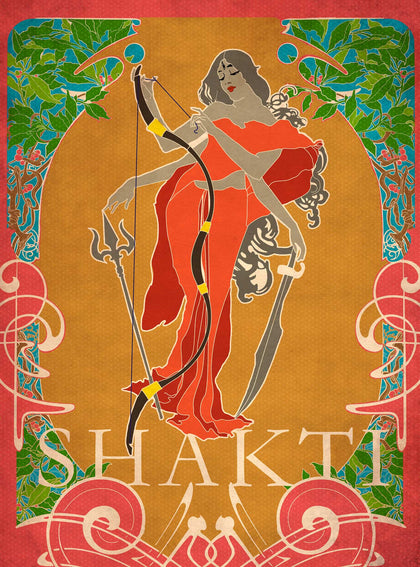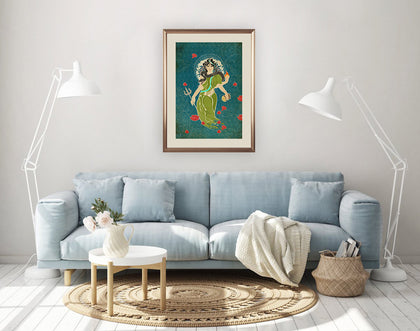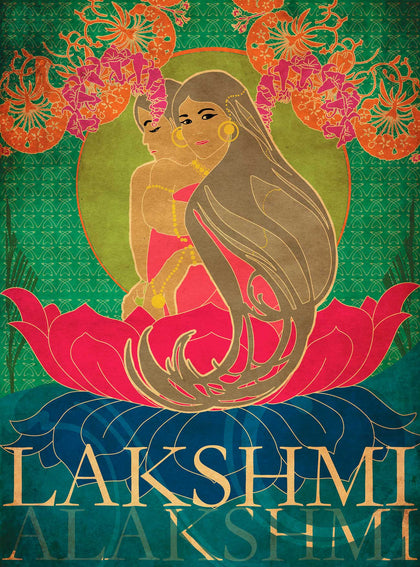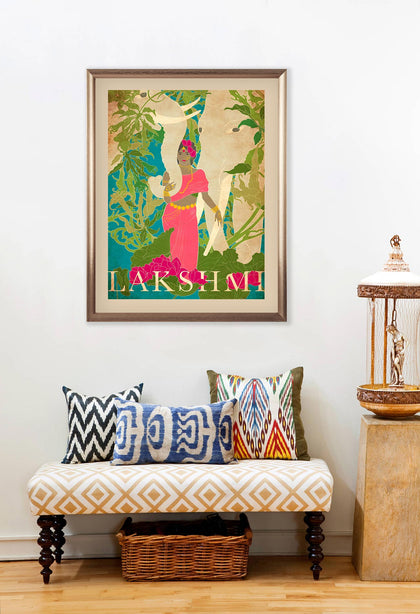Description
The image of Parvati covering her face with a lotus is the story behind the Lingam and the Yoni. A lipped disk shaped form – the Yoni (the emblem of the Devi) with the phallic Lingam (the presence of the God Shiva). The couple would come to be known and symbolized for their thousand years of lovemaking.
In that era of pleasure, the walls of the glacier (their home in the mountains) thawed and Shiva’s tapas was released into the world – rivers into the plains and life into the dry soil. Their union would be symbolic and would come to represent fertility, generative and creative power at every cosmic level. In their cave of copulation though, nothing mattered to them. Greater responsibilities as gods were consumed by their lust for each other.
This disregard for the rest of existence only seemed to be problematic when they received unexpected guests, and Rishis at that. These sages of deep thought and meditation are often proud men, welcomed with reverence wherever they roam. Impatient, arrogant and in fits of fury are known to curse both humans and gods. Arriving at Shiva and Parvati’s abode, they walked right in on the couple making love. Parvati was shy, and giggled as she covered her face with a lotus, because Shiva would not stop making love to her. The Rishis were appalled and angry, and cursed the couple that they would from then on, be known and represented by the Lingam and Yoni. A curse that made little difference to anyone and the idea of shame receded into the horizon along with the irate and sanctimonious Rishis.
About the Series:
This artwork is part of the “Sister Misfortune” series, through which the artist, Smruthi Gargi Eswar, narrates lesser-known stories from Indian mythology, while reflecting on the narrative surrounding women in our culture. Various Indian goddesses (devis) are depicted with a refreshing artistic lens.
In India, there is a constant burden on women to be “Devi-like”. Through this series, the artist attempts a reverse deification of the goddesses, making them appear like real women, in a real world. The series is an exploration not just of duality, but of multiplicity. It compels us to question our attitudes - women towards themselves, men towards women. How does the idea of a goddess coexist within every woman? How do we, as a society, so casually dismiss, disrespect, disregard, and defile in our everyday existence, those who we have bedecked with gold and enshrined in a temple?






















































































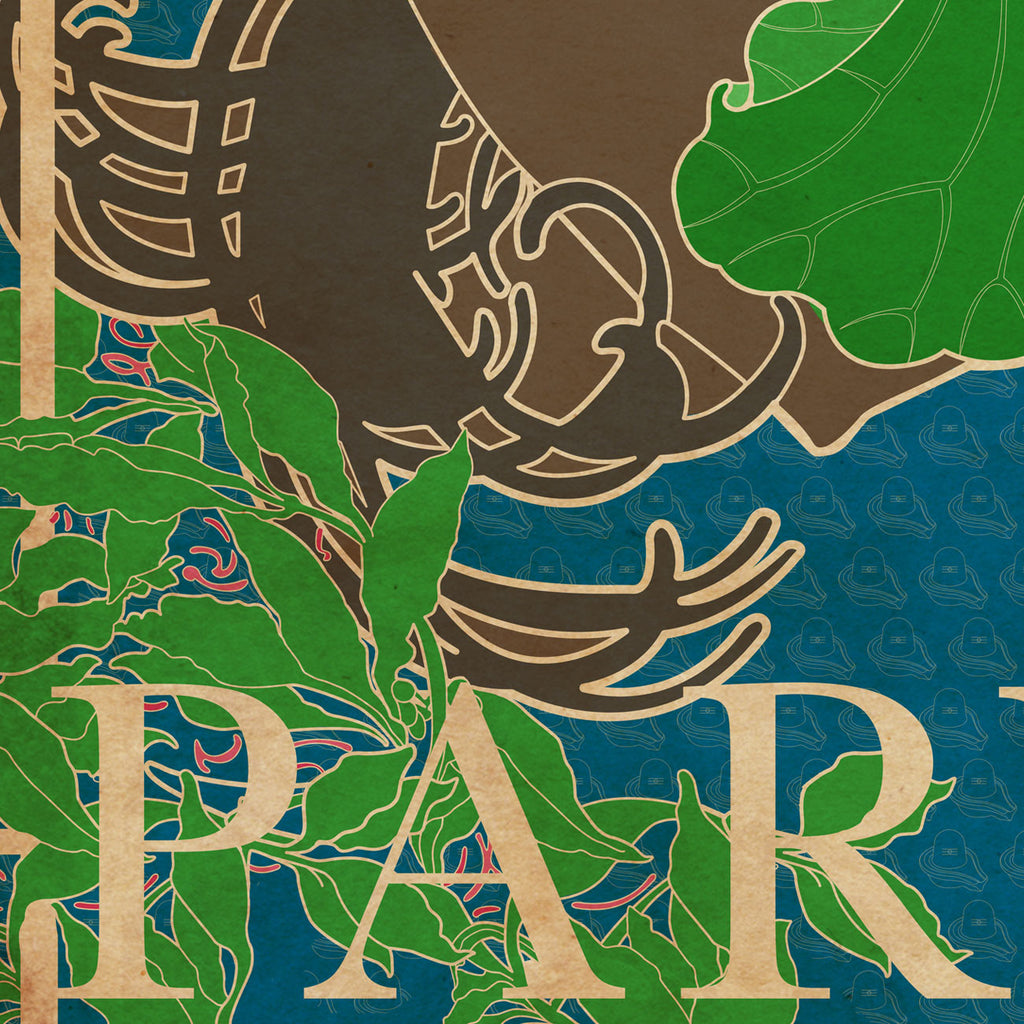
 View Full Screen
View Full Screen































